A different look at the Ottomans – Guided Istanbul tours
The Palace of Dolmabahce, completed in 1856, is the third largest Ottoman palace in Istanbul. It is also the last one that the Sultans built. Located on and offering great views of the Bosphorus, this amazing palace is poles apart from the other Ottoman palace – Topkapi. It is a great place to offer a more modern yet historic view of Turkey. Dolmabahce Palace is simply beautiful. It is very European and grand. The palace can easily be your favourite destination in the guided Istanbul tours. Dolmabahce Palace can also be in your top list for Istanbul sightseeing and daily tours Istanbul.
During the six hundred years of Ottoman rule, the seat of the empire changed several times. Fist it was Bursa, then Edirne and later to Istanbul. The site of the imperial ‘palace’, centre of Ottoman government, changed also over the centuries in Istanbul itself. The construction of Dolmabahce Palace was between 1843 and 1856. It hosted some sultans as the main administrative centre of the Ottoman Empire from 1856 to 1922. For the interval between 1889-1909, the sultans used Yildiz Palace. Up until the mid-19th century, Topkapi Palace was the residence for the sultans. It is still bearing the medieval lifestyle and thus not meeting the mundane needs. Dolmabahce Palace, in that respect, is part of the modernization attempt of the Royal family in architectural terms.
The world knew the Ottoman Empire as ‘the sick man’

At a time of economic reform, people would think of the Ottoman Empire as ‘the sick man’. It was increasingly falling under the financial control of the European powers. And also Ottomans had lost territory in a series of disastrous wars. Sultan Abdulmecid II spent millions on a palace that would give the illusion of prosperity and progressiveness.
Until the 17th century the area where Dolmabahce Palace stands today was a natural harbour. It was a bay, where the navy anchored in the early periods. When the Ottomans conquered Istanbul, they gradually filled that bay. So it became one of the imperial parks on the Bosphorus. Its name is Dolmabahce, meaning “filled garden”. A series of imperial mansions and pavillions appeared there. The place eventually grew into a palace complex known as Besiktas Waterfront Palace. This palace was demolished in 1843, and Dolmabahce Palace (as we see it today on guided Istanbul tours) was built in its place. Extending for almost 8 km on a tract of landfill on the shores of the Bosphorus. This imperial structure was built by the Armenian architect Garabet Balyan. Balyan used Western architectural techniques and designs. However, he did not disregard traditional Ottoman elements.
A magnificent building to make your private guided tours Istanbul an experience to remember
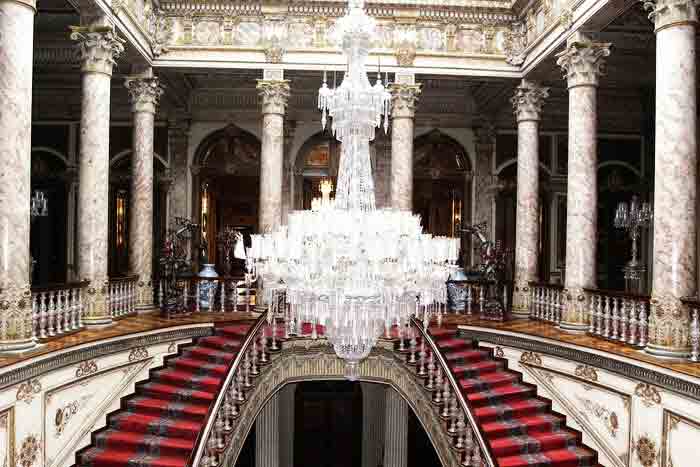
Sultan Abdulmecid II spared no expense in creating a house to rival the most opulent palaces of France. The result is a magnificent building consisting of 285 rooms, four grand salons, six galleries. Also, five main staircases, six hamams and 43 toilets. Dolmabahce palace has three parts: the Mabeyn-i Hümayun (or Selamlik, the quarters reserved for the men); Muayede Salonu (the ceremonial halls) and the Harem-i Hümayun (the Harem, the apartments of the family of the Sultan). The main features are its gates, Waterfront facade, Ceremonial Hall, Harem, State Rooms. Also, Ataturk rooms, Crystal staircase, Sultan’s bathrooms, Clock Tower and Gardens.
Dolmabahce palace has an area of 45,000 m2. An incredible fourteen tonnes of gold leaf was used in the construction of the Palace. It is a glittering collection of Baccarat, Bohemian, and English crystal. As well as Venetian glass, which was used in the construction of walls, roofs, banisters, and even a crystal piano. There is the world’s largest crystal chandelier, weighing 4.5 tonnes in Dolmabahce – a present from Queen Victoria. The extravagant collection of objects d’art represents just a small percentage of items presented to the occupants of the palace over the years. Much of the collection is stored in the basement awaiting restoration.
Where Mustafa Kemal Ataturk studied
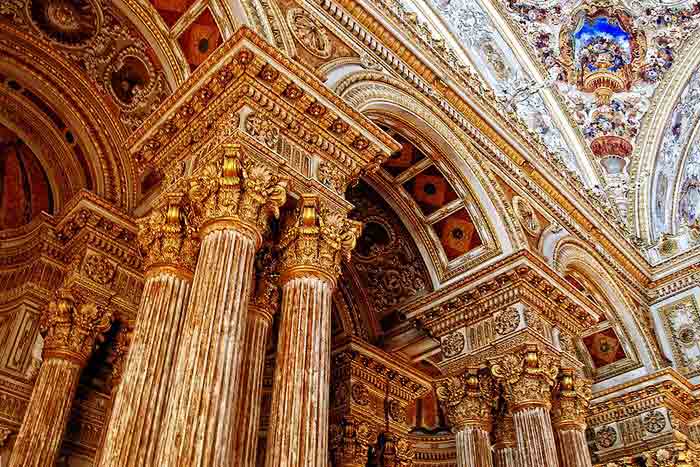
Another important part of the palace are the rooms where Mustafa Kemal Ataturk studied and slept. He also welcomed his foreign guests in the palace. In addition there he made a practical centre for national, historical and language congress and for international conferences. The founder of the Turkish Republic died there on 10th November 1938 at 9.05am. The clock in his bedroom froze permanently at this time.
Nearby are the Dolmabahce Mosque and the Dolmabahce Clock Tower, which are also very spectacular.
With a breathtaking view of the Bosphorus, this huge palace – Dolmabahce, with its hundreds of rooms and halls, will leave you stunned. Just like Sightseeing Turkey will take you around and show you a world of myths, legends, historical facts…
Make sure you visit this extravagant place during the guided Istanbul tours. The palace is a masterpiece of urban evolution in the Ottoman Empire. What is more, this is a prestigious addition to the urban silhouette of Istanbul. Contact me to learn interesting information about Dolmabahce Palace and to take good memories from Istanbul and Turkey.
s

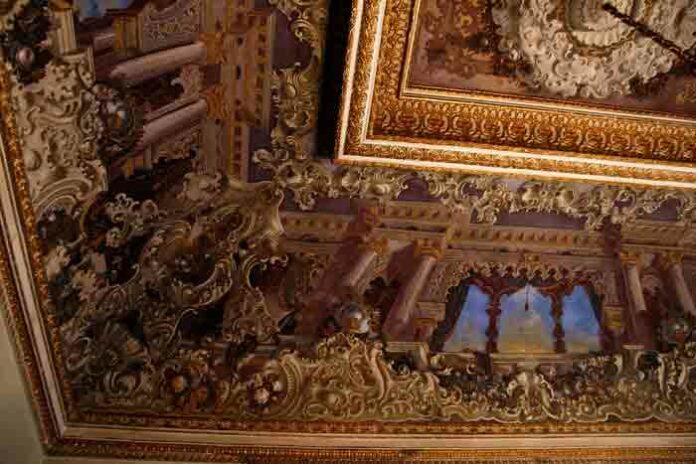

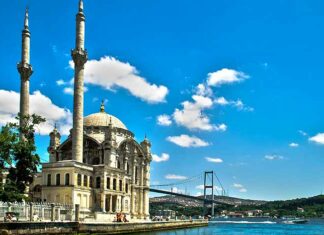
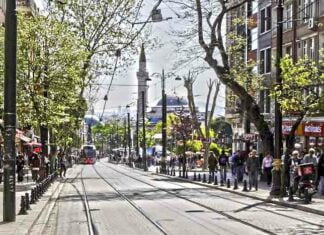
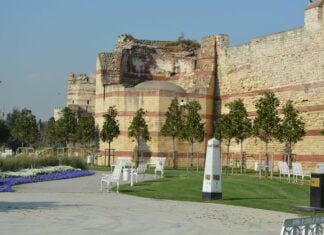
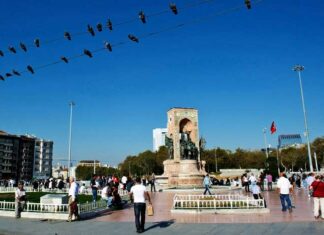
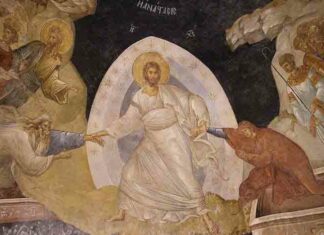

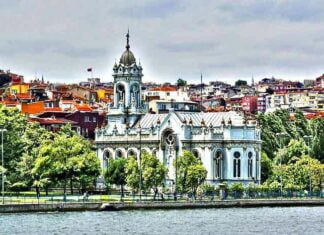

Wow, what a splendour!
Every time I visit Istanbul I have great time. And the pictures I take. They are amazing, not because ı have the greatest camera but because of Istanbul itself. Dolmabahce Palace on the Bosphorus in spring. Can you imagine it?!:-)